Have you wandered into your pumpkin patch only to uncover half-eaten leaves, gnawed vines, and scarred pumpkin fruit? Then you probably want to know what’s eating your pumpkin plants and how to get rid of them!
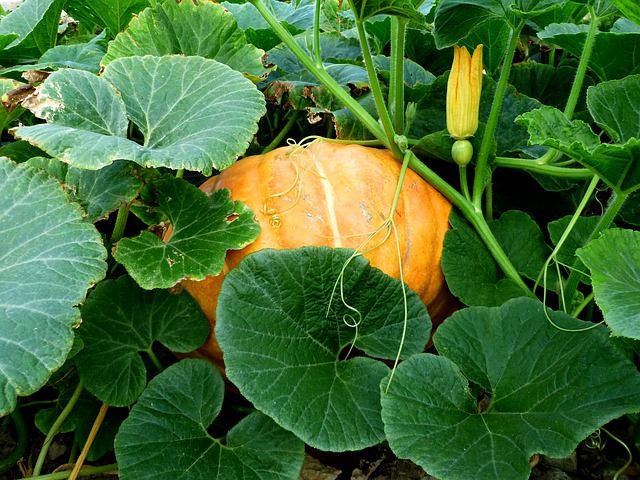
Table of Contents
What’s Eating My Pumpkins?
The most likely pests eating your pumpkins are squash bugs, aphids, squash vine borer, armyworms, cucumber beetles, whiteflies, cutworms, flea beetles, and thrips.
Read on to find out which of these many pesky pests are eating your pumpkins, and ways to get rid of them.
Related: Pumpkin Flowers But No Fruit? | The Growth Stages of a Pumpkin | 7 Causes of Dying Pumpkins | How to Eat Pumpkin Leaves
1. Squash Bugs
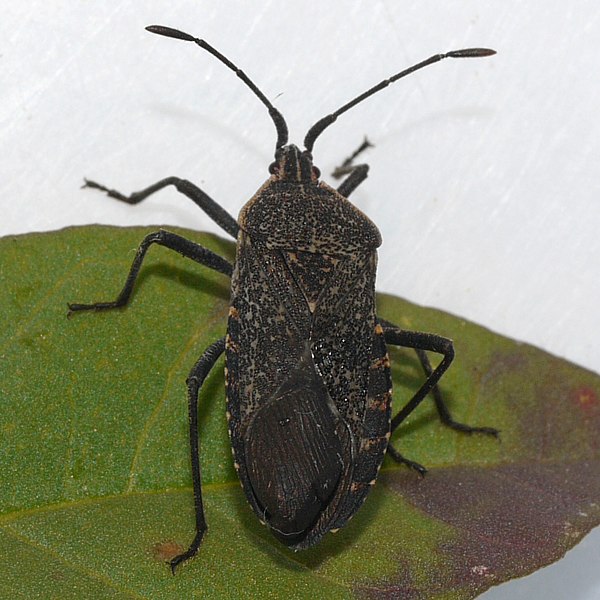
Squash bugs are a common pest that plague pumpkin-growing home gardeners. Squash bugs are flat, brown, or gray and are roughly ⅝ inch (15mm) long.
They like to hang out on the leaves and stems of pumpkin plants, which is also where they lay their eggs. These dark orange/brown eggs hatch into small green-bodied, black-headed nymphs.
Squash bugs are sap-sucking beetles, so if your pumpkin is being eaten by them you will notice yellow spots on the leaves where they have fed. Due to their feeding habits, your pumpkin plant will start to wilt because all the vital nutrients and water are being sucked out of your plant.
How to Get Rid of Them: If squash bugs are infesting your pumpkins, you will need to remove them by hand, daily. This includes checking the underside of the leaves for the egg clusters and removing those too.
Squash bugs are easier to eradicate when they are nymphs because the adults like to hide away. You can trap adult squash bugs by laying out newspaper sheets around your plants, which they will hide under. Simply remove any bugs you see in the morning.
Neem oil also works to get rid of a larger infestation by a combination of spraying visible Squash bugs directly as well as the pumpkin plant leaves. By applying neem oil to the plant, Squash bugs won’t be able to lay their eggs on the plant and you will successfully disrupt their breeding cycle.
2. Aphids
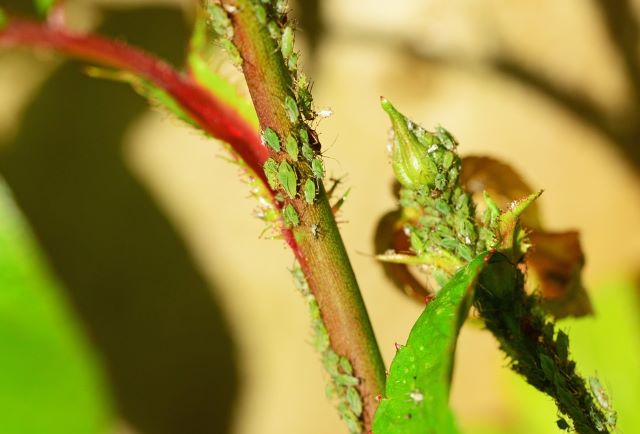
Aphids are perhaps the most common garden pest encountered, and wow, are they a nuisance! Aphids are tiny, soft-bodied, sap-sucking insects that can be light green, black, white, grey, or pink.
These tiny nuisances can be found on the underside of the leaves and stems of your pumpkin plants. Despite their small size, aphids can reproduce rapidly, leading to large infestations if left unchecked.
If your aphid problem is particularly bad, the leaves of your pumpkin plant will start turning yellow, and develop necrotic spots. Your pumpkin plant may also develop sooty mold, which is caused by the sweet, sticky substance aphids secrete called honeydew.
How to Get Rid of Them: Despite being a thorn in the side of home gardens everywhere, aphids are easy to control using items you usually have in your home.
The first thing to do when you spot these tiny pests is to spray your pumpkin with the garden hose. I usually find a few decent sprays will dislodge the majority of the little invaders. If it doesn’t, simply wipe them away with a damp paper towel.
Next, spray a mixture of 1 tablespoon of bleach-free dishwashing liquid, and 1 liter of water onto your pumpkins. You should do this once every 3 days for two weeks, moving to once a week thereafter to keep aphids under control. Or you can use an organic insecticidal soap spray.
3. Squash Vine Borer
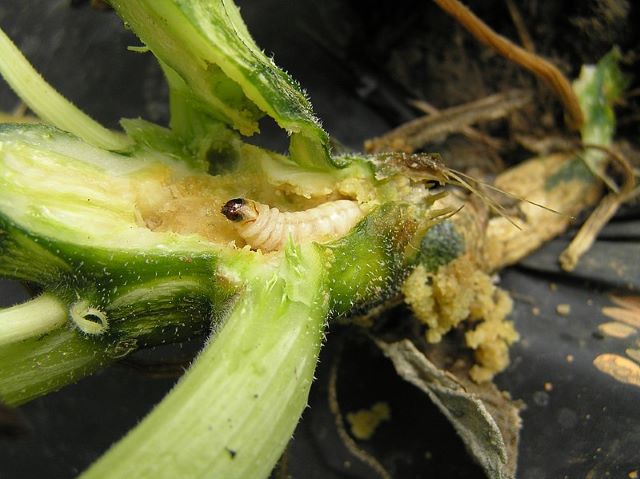
Squash vine borers are notorious garden pests that can cause extensive damage to pumpkin plants and other members of the cucurbit family, such as zucchini. These insects are orange-bodied, clear-winged moths in their adult stage, but it’s their larval stage that inflicts the most harm.
The squash vine borer larvae are white with brown heads and reach about one inch in length. The larvae are so destructive because they burrow into the stems of your pumpkin. The first symptom of a squash vine borer problem is wilting pumpkin leaves.
The larvae block the flow of water and nutrients, which leads to wilting. If you look closely at your pumpkin plants, you will see small holes at the base of your plant, where the larvae entered. In the holes, you will find frass, which is an orange sawdust-like substance. If your plant has produced fruit, the larvae will burrow into them too.
How to Get Rid of Them: Squash vine borers are not the easiest pest to control and are easier to prevent by using floating row covers. But they will need to be removed when flowers appear for pollination.
If you see your pumpkins starting to wilt, you can try to find to grub by making a small incision lengthways on the stem. When you see the larvae, you can remove them with the blade. Once you have removed them, cover the incisions with moist soil.
Diatomaceous earth sprinkled around the base of your pumpkin plant can help to keep squash vine borers from your plant.
And insecticidal soap can be used on any eggs you might spot on the pumpkin leaves as well as to prevent any future eggs from being laid.
4. Armyworms
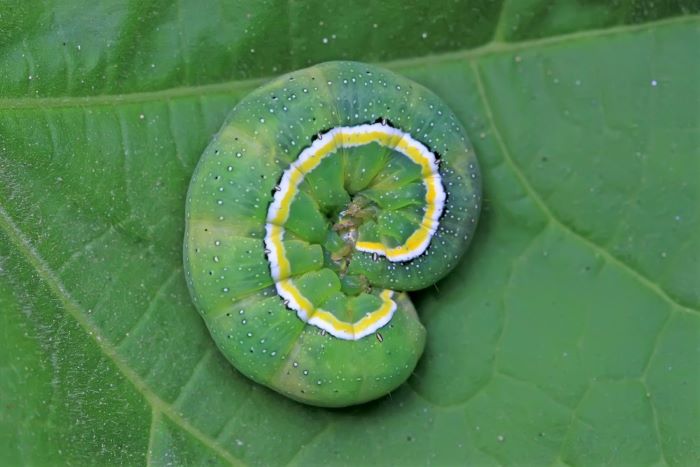
Armyworms are caterpillars (including Beet armyworm and Western striped armyworm), and like squash vine borers, are moth larvae. They have smooth, cylindrical bodies and can range in color from black to pale green. This garden pest gets its name from its behavior of moving in large groups like an army, devouring plants as they go.
Armyworms often leave behind singular, or closely grouped, irregularly shaped holes in the foliage of pumpkin plants. These voracious feeders consume large portions of leaves, causing noticeable damage.
The feeding habits of armyworms may appear as ragged edges or missing sections on the leaves, they can also munch on your pumpkin fruit. Keep an eye out for these telltale holes as a sign of armyworm presence in your pumpkin patch. Armyworms can quickly defoliate your pumpkin plants.
How to Get Rid of Them: If you think your pumpkins are being eaten by armyworms, take a stroll through your pumpkin patch at night. Inspect the underside of your pumpkin plant’s leaves, and if you see any, remove them by hand.
If you do uncover armyworms nibbling on your pumpkins, you will have to inspect them each evening. If the infestation is bad enough, i.e. if your pumpkin plants are looking rather bare, you can apply neem oil to them.
5. Cucumber Beetles
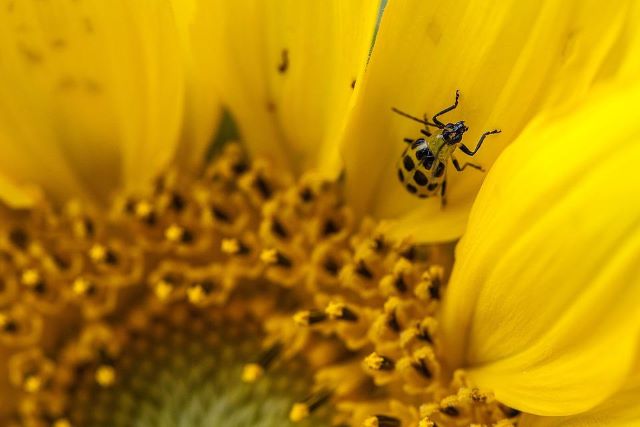
Both species of cucumber beetles (spotted and striped) are known for their healthy appetite and ability to transmit bacterial wilt, a devastating disease that can kill members of the cucurbit family of plants.
Generally, younger plants are the common target of cucumber beetles, but they will munch on older plants if they have the opportunity.
The striped cucumber beetle is a small, slender beetle with a distinctive appearance. It has an elongated, slightly curved body shape. It has a yellowish-green body with three bold black stripes running lengthwise along its wing covers. The spotted cucumber beetle is similar in appearance, except it has spots, not stripes.
If your pumpkin is being eaten by cucumber beetles you will notice small holes in the leaves and scarred fruit. Additionally, your plant may start to show symptoms of bacterial wilt.
How to Get Rid of Them: The easiest way to protect your plants from cucumber beetles is to cover them with floating row covers. Floating row covers alone will not be able to control cucumber beetles, as they come out of the soil to eat your plants. Therefore you will need to spread diatomaceous earth around your plants too.
If you use the row covers, just remember to remove them at the time of your pumpkin plant flowering to allow for pollination.
Should you choose not to use row covers, you can instead hand remove any cucumber beetles you might spot and use neem oil to prevent eggs from being laid on the pumpkin plant leaves.
6. Whiteflies
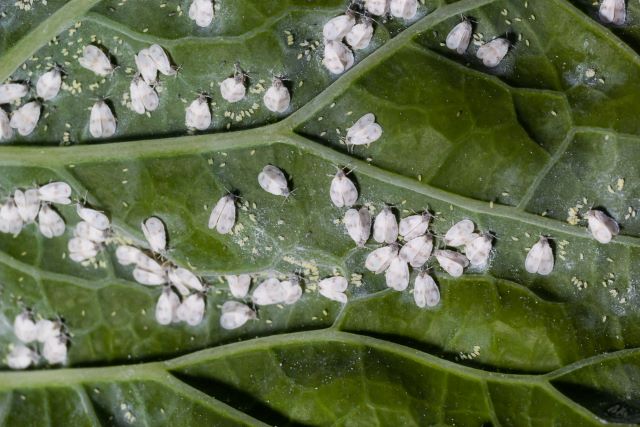
Whiteflies are a relative of another common garden menace, aphids. They are small, sap-sucking winged insects that are named for their powdery white appearance. Like aphids, they often congregate on the undersides of leaves in large numbers.
When disturbed, they tend to fly in a cloud-like manner, which is why they are sometimes mistaken for tiny white moths.
Whiteflies are drawn to your pumpkin plants by their sweet smell and flowers. If whiteflies have targeted your pumpkins, the leaves of your plant will begin to turn yellow, and your plant will wilt.
How to Get Rid of Them: Luckily, like aphids, whiteflies are easy to deal with and can be handled naturally and organically. To shoo whiteflies away from your pumpkins, you can plant strong-smelling plants such as thyme, rosemary, basil, marigolds or nasturtiums. Whiteflies detest strong-smelling plants!
Neem oil also works well for a larger whitefly infestation. Spraying the pumpkin plant leaves makes laying their eggs impossible.
7. Cutworms
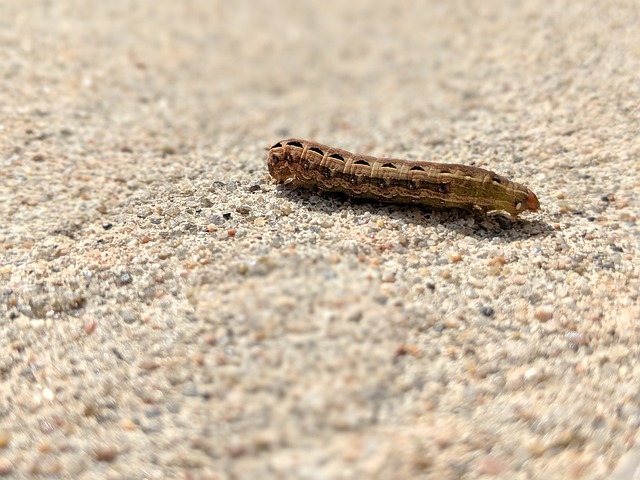
Cutworms, like armyworms, are moth larvae and can be equally destructive. These plump, white, green, or brown caterpillars are notorious for their nocturnal feeding habits and their ability to cut through young plant stems at ground level. Cutworms often cause severe damage to seedlings and young plants, including pumpkins.
However, cutworms are climbing caterpillars and so they will happily munch on your pumpkin plant’s foliage too. If they have taken a liking to your older plants, a telltale sign is irregular holes in the leaves and fruits of your plants.
How to Get Rid of Them: Cutworms are nocturnal, so grab your flashlight and head into your garden in the dark! Remove any cutworms you catch, they will curl themselves into a C-shape when disturbed. You will also find cutworms hiding in the soil below your pumpkins, so make sure you disturb the ground and remove any you find there too.
Once you have removed all visible cutworms from your plants, you can protect them from future attacks by making a collar around their stems. I like to use tinfoil for my protective collars, but you can use cardboard if you prefer. The collar needs to be placed a few inches below and above the ground to be effective.
A sprinkle of diatomaceous earth around the pumpkin plants is also a good preventative measure. And neem oil used on the leaves will help prevent egg laying.
8. Flea Beetles
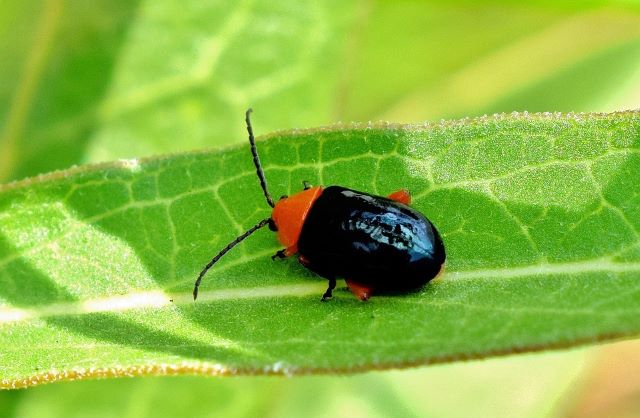
Flea beetles are tiny, dark-colored jumping insects that get their name for their ability to jump like fleas when startled. These pests are common in vegetable gardens and can cause damage to various crops, including pumpkins.
If flea beetles are nibbling on your pumpkin you will notice numerous small pits, or holes, on the leaves of your pumpkins, known as shotholes. If several flea beetles are eating your pumpkin plant, its growth will become stunted and it will eventually die.
How to Get Rid of Them: One of the ways to get rid of flea beetles is to apply neem oil to your pumpkins. You will need to spray your plants with neem oil once every 3-4 days for 2 weeks, following which, 1 application per week should suffice.
In addition to neem oil applications, you can cover your plants with floating row covers to stop the tiny jumping pests. If you do not want to cover your plants, you can spread diatomaceous earth around them.
9. Thrips
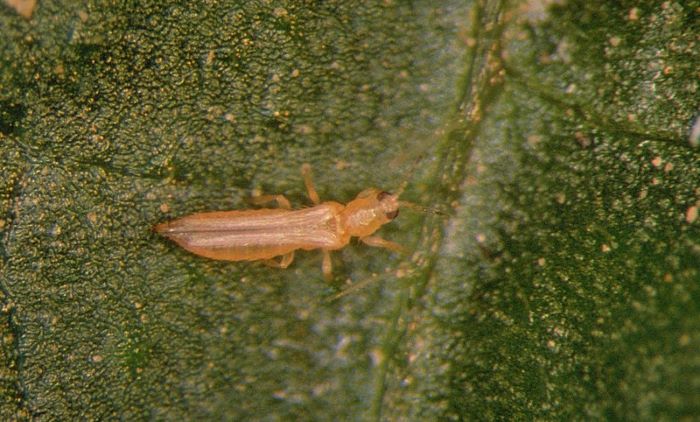
Thrips are tiny sap-sucking, fringed-winged insects and are not the easiest pests to spot due to their small size. However, their feeding can cause significant, noticeable damage to the foliage and fruit of pumpkin plants.
Thrips are incredibly small insects, measuring up to 1/17 of an inch (1.5mm) in length. They have elongated, narrow bodies with fringed wings. Thrips come in various colors, such as yellow, brown, black, or even translucent, depending on the species. Though it is usually the Western Flower Thrips pictured above, who are the culprit in the pumpkin patch.
The damage done by thrips is misleading, making you believe your plant is suffering from a disease or nutrient deficiency, rather than pest activity. If the leaves of your pumpkins are distorted, and take on a silvery appearance thrips are the problem. Additionally, if you look closely you will see black specs on the leaves, which is the tiny pests feces.
How to Get Rid of Them: ‘Easy’ is definitely not a word that springs to mind when talking about getting rid of thrips, as they are particularly difficult to control. Firstly, it is important that you remove any of the affected leaves or dying plants.
Once the damaged leaves and plants have been removed, you can dislodge the thrips by shaking your plant. Once you are satisfied that the thrips have been dislodged, you can cover your plants with floating row covers.
Hosing thrips off your pumpkin plant also works. Along with using an old vacuum cleaner to gently remove them.
Neem oil is also effective in thrips control and using sticky traps like these around your pumpkin plants.
Further Reading:
